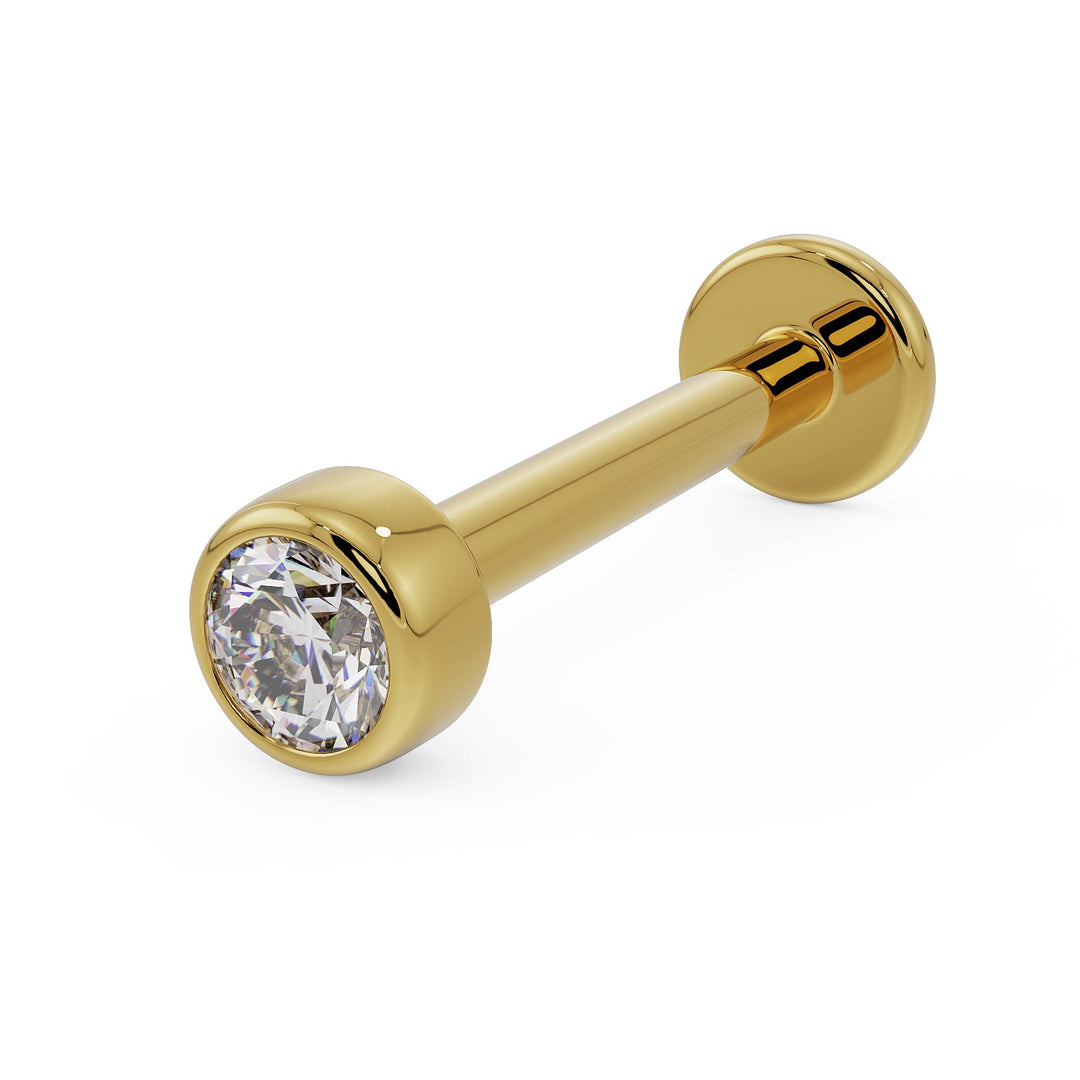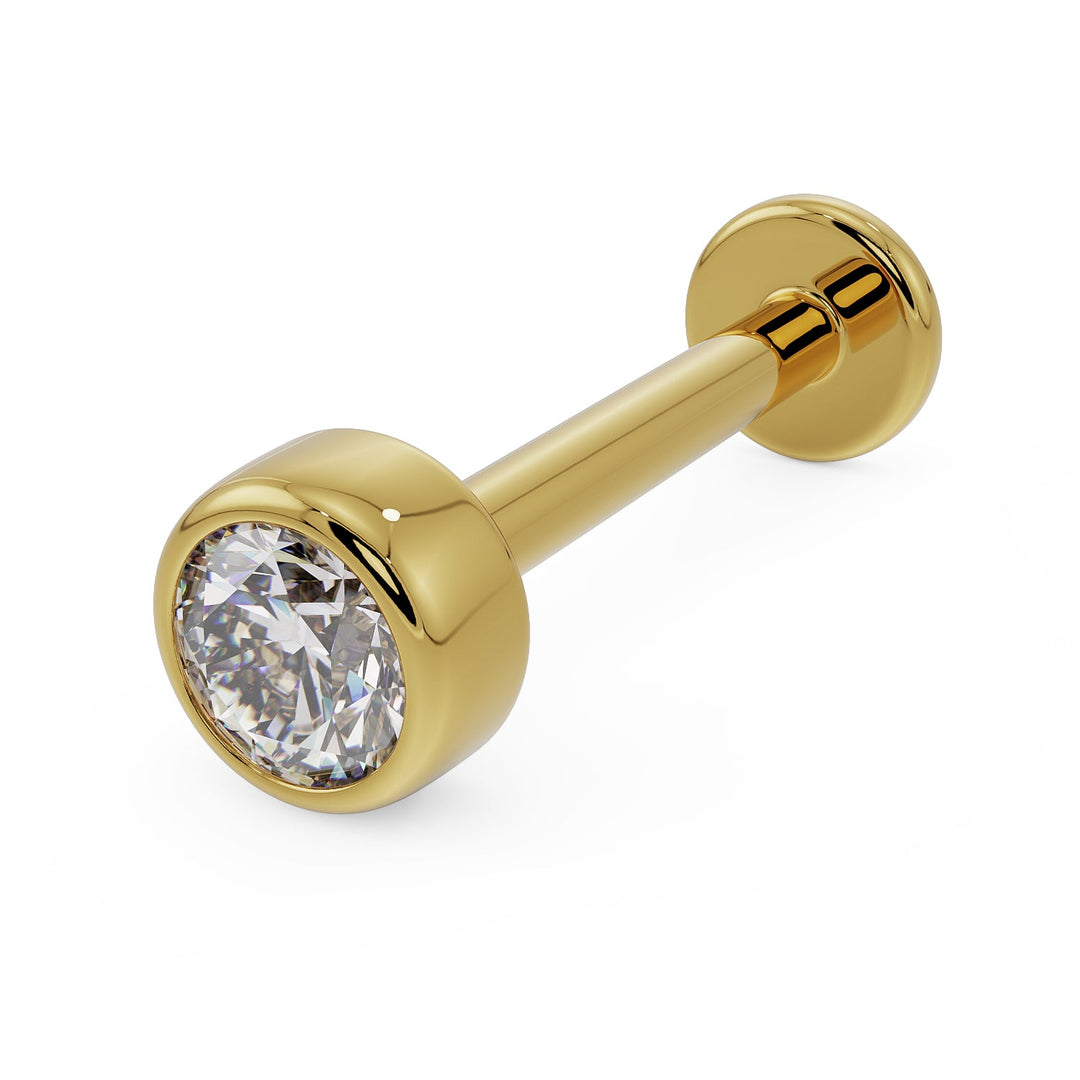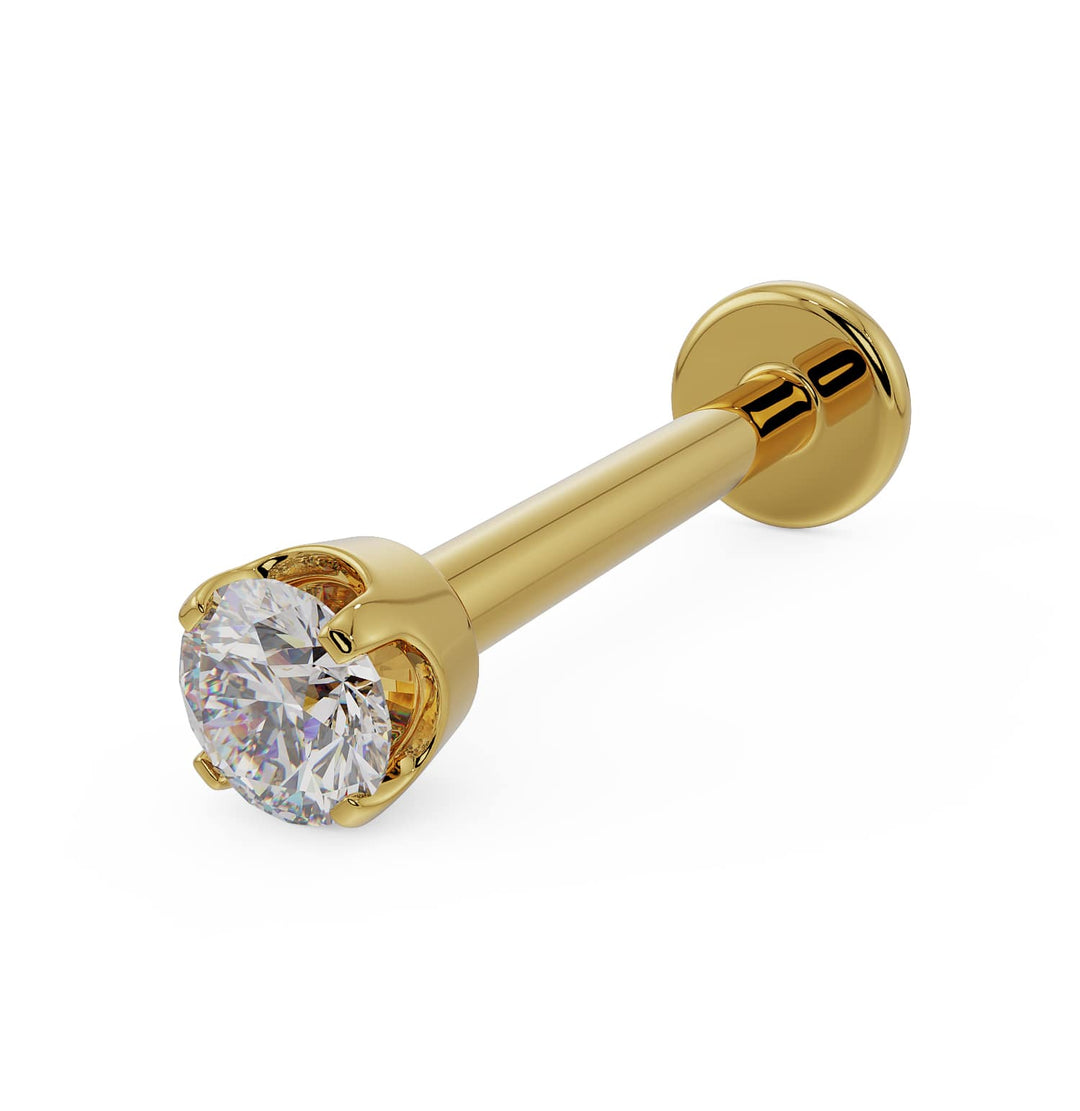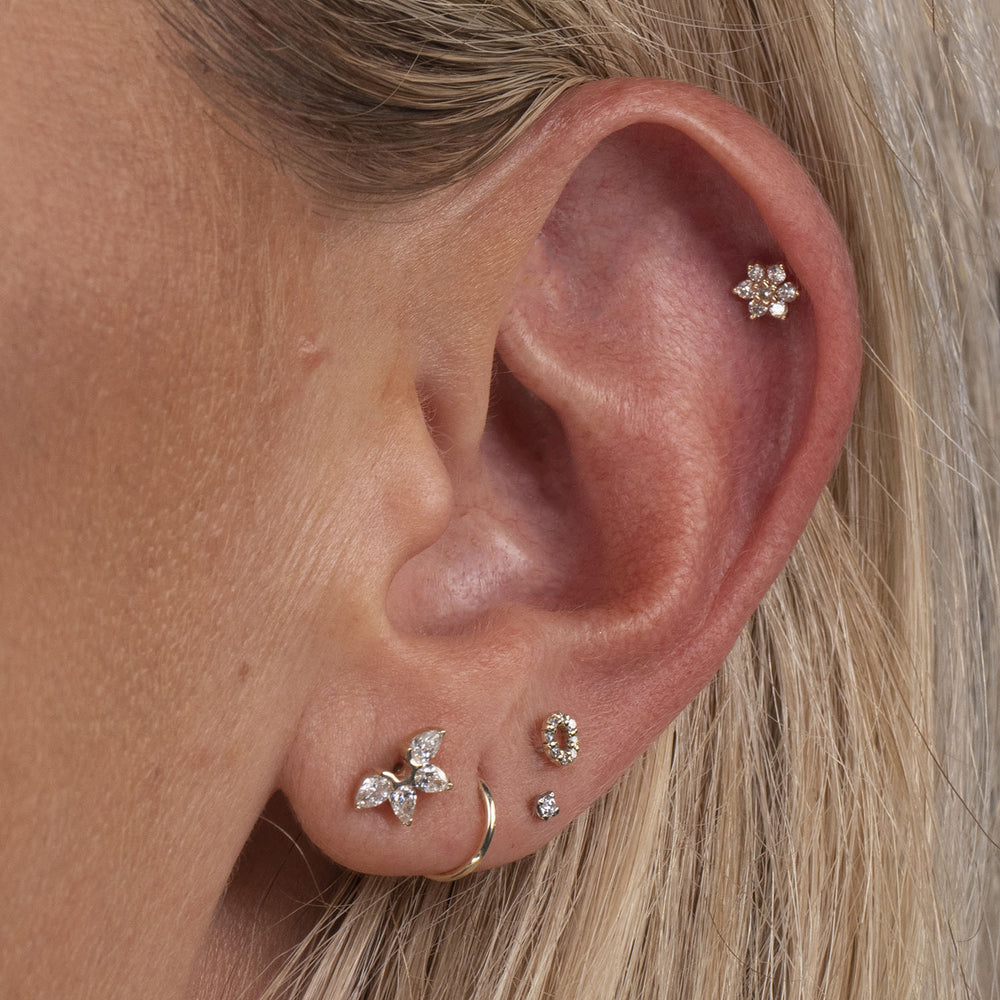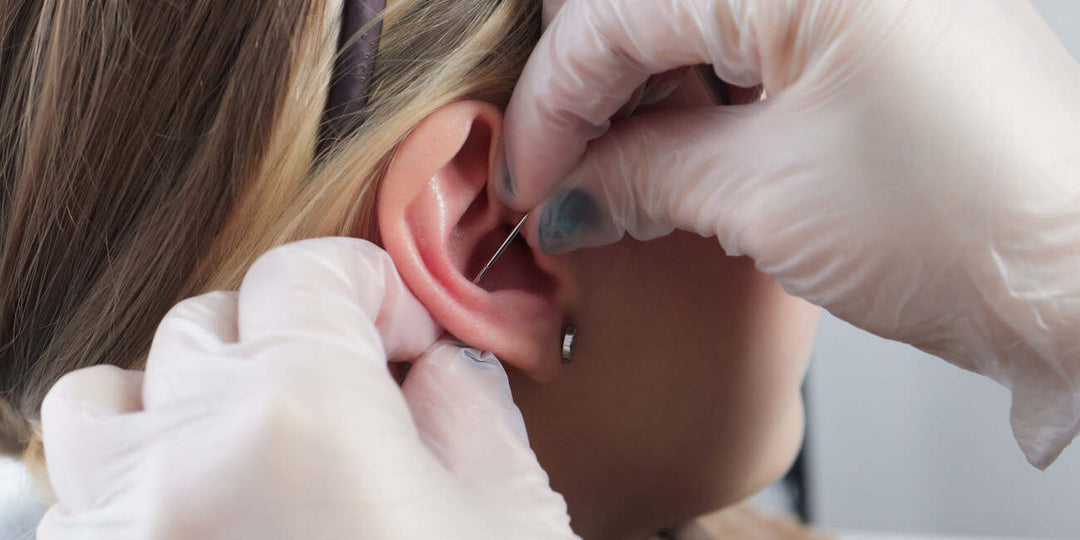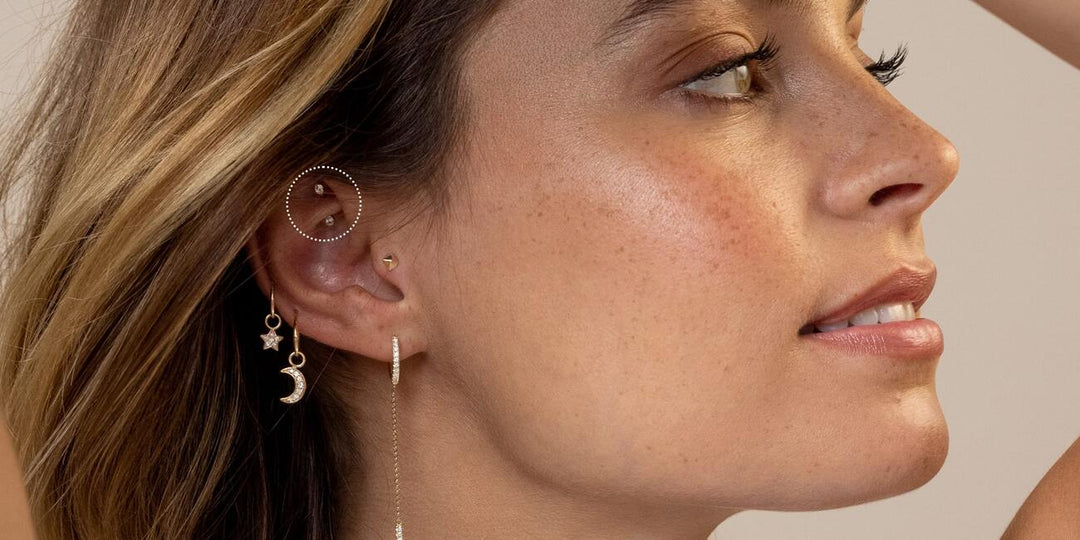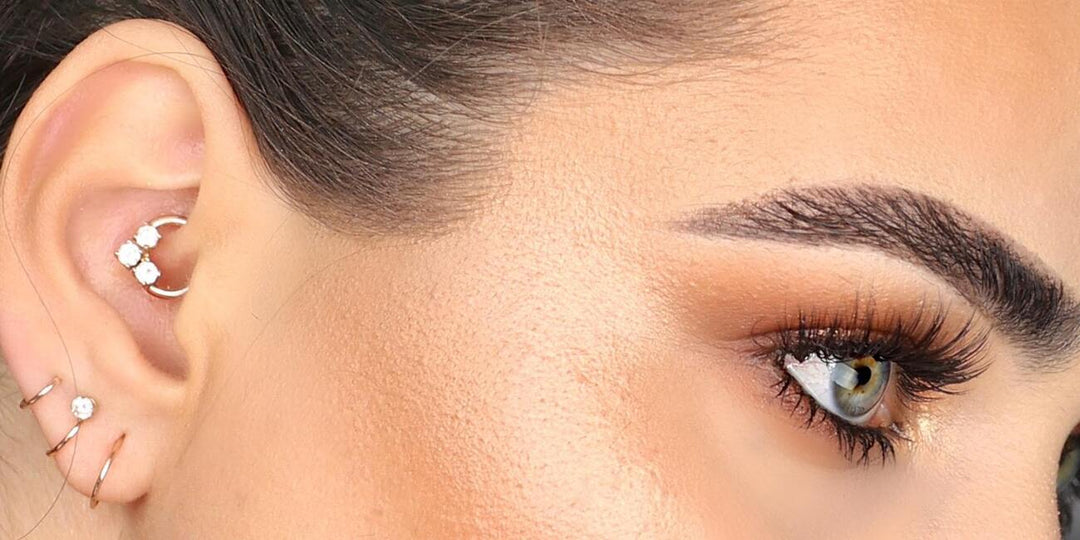The Tragus Piercing: Everything You Need To Know
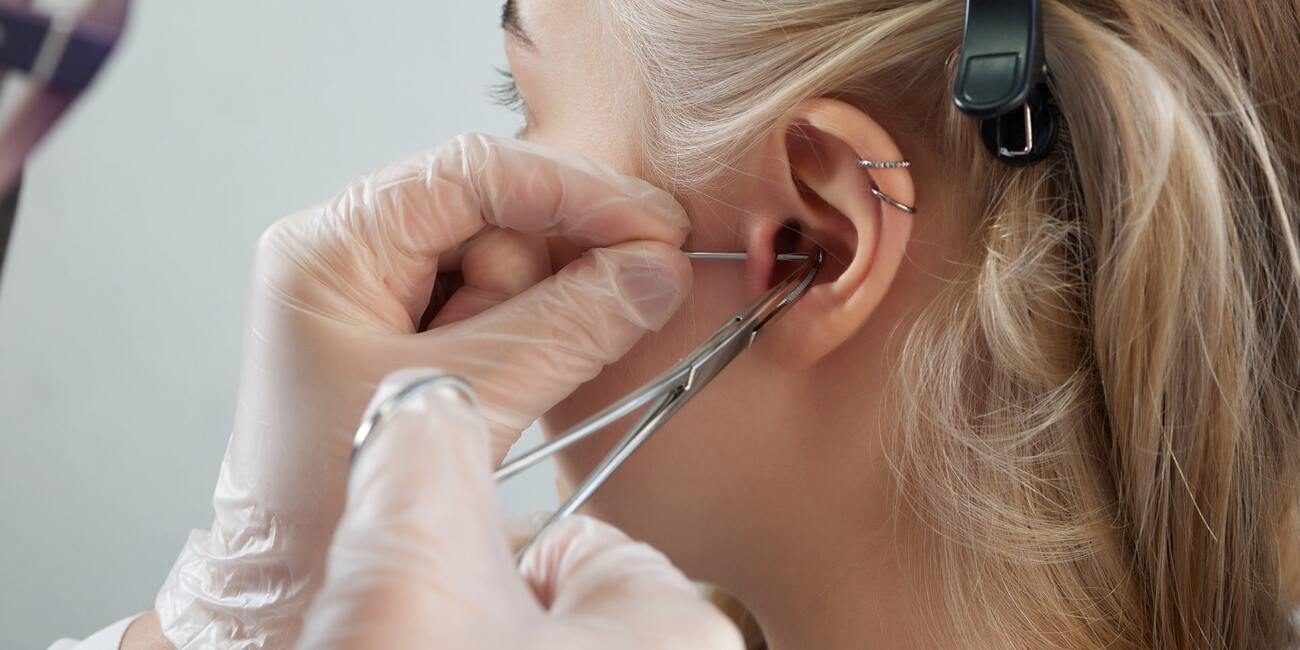

When you plug your ears, sometimes you might make use of a helpful little flap of cartilage located right in front of your ear canal. That’s your tragus.
The tragus is typically a rounded triangle shape. Its size and shape varies from person to person; some have a pronounced tragus while others hardly have one at all. It also makes for a super cute piercing.
The unique location of the tragus piercing allows the piercing to speak for itself; a simple cartilage stud with even the tiniest gemstone offers a style that’s both understated and eye-catching.
The proximity of the tragus to the ear canal makes it susceptible to the bacteria that dead skin cells and ear wax carry. Additionally, cartilage has a lower blood supply than more fleshy areas, which makes it a higher risk for infection and scarring. Therefore, you must be a little more stringent with piercing aftercare than other piercing types.
The tragus piercing is not for everyone, but don’t let that scare you away. Here’s all you need to know about the tragus piercing so that you can decide if it’s the piercing for you.
Does A Tragus Piercing Hurt
Although the cartilage is thicker in the tragus, the tragus piercing doesn’t hurt more than other cartilage piercings, so if you’ve gotten a helix, auricle, conch, or other piercing in the ear cartilage, you should know what to expect pain-wise.
However, the tragus is located next to the ear canal, so beyond the pain and pressure of the piercing process, you’ll likely hear a pop as the needle goes through. Some find this to be a little unnerving.
As with every piercing, the pain level often relies on the expertise of the piercer. If you’re nervous, find a piercer who is patient, experienced, and can ease you through the process.
Tragus Piercing Healing Time
The tragus will take a few months to heal. Cartilage famously varies in its healing times, but most often the tragus heals between 2 - 3 months. However, some report healing times of up to a year, so keep an eye on your piercing and talk to a piercer if you’re unsure you’re fully healed. Keep in mind that the inside of a piercing takes longer to heal, so even if it looks healed externally, it might still have some healing left to do.
Aftercare Rules
As mentioned previously, the tragus healing process requires strict aftercare practices. The difficulty of healing cartilage combined with its location next to the bacteria-ridden ear canal makes it extra susceptible to infection and scarring. Beyond standard aftercare practices, here are some aftercare tips unique to the tragus piercing.
Be careful with your headphones. Putting pressure on any new piercing causes trauma to the area and can provoke complications. Since the tragus is located so close to the ear canal, headphones tend to put pressure on the new piercing. Even small pressure over a long period of time can create issues. You can wear ear buds, but see to it they aren’t putting too much pressure on your jewelry backing. If you want to wear headphones, make sure that the headphone cushions go around your ear and do not touch the tragus.
Take care when you sleep. Try not to sleep on your piercings. Like wearing headphones, sleeping on your side puts pressure on the earring. If you must sleep on your side, try to limit the time you spend. You should also make sure that your bedding is always clean to avoid harmful bacteria.
Don’t move the jewelry. Although this is a standard rule, with cartilage piercings, it’s extra important. Moving the jewelry slows healing and causes trauma to the skin, which can lead to piercing bumps. To avoid crusties, you can gently wash them away with a salt bath or saline solution.
Keep the ear clean. Earwax exists to keep the ear free from bacteria and other foreign substances that can be harmful to the eardrum. It stops harmful entities in its tracks. This means that earwax is full of stuff that you don’t want near your piercing. When you carefully clean the jewelry, make sure that you’re keeping the ear canal clean as well.
Tragus Piercing Jewelry
The tragus piercing is most commonly 16G, but sizes range between 18G - 14G. Sizing depends on personal preference as well as the size of your tragus, so it’s a good idea to talk to your piercer about your options. Remember that it’s easier to stretch a piercing than it is to shrink it.
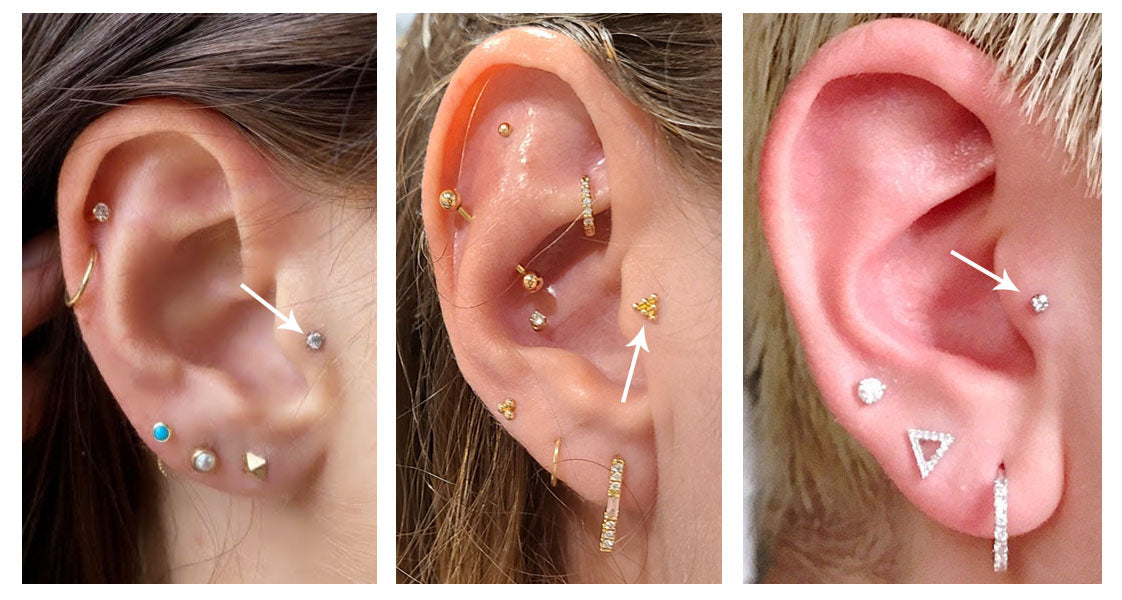

By far, cartilage studs are the most popular jewelry styles for the tragus piercing. The unique location of the tragus speaks for itself; a small gemstone or charm peeking from the tragus is enough to make this piercing shine. Typically, you want to choose a stud with a flat disc backing so that the back of the jewelry doesn’t stick into your ear canal, but you can choose a bead backing as well. You can also opt for a small straight barbell for a similar aesthetic to the cartilage stud.
However, cartilage studs are not the only option. Some opt for a sleek seamless hoop, and others go bolder with a captive bead ring or other stunning hoop options. Piercings allow you to express your individuality, so don’t be afraid to get creative.
FreshTrends Tip
Clean your piercing twice a day with a saline-based solution. Avoid pressure on the area by not sleeping on the side until it heals.
Why Shouldn’t I Get A Tragus Piercing?
The tragus piercing will require vigilant aftercare practices. Don’t get it if you know that you can’t adhere to a cleaning schedule.
The shape of the tragus varies greatly from person to person. If your tragus is too thin, too small, or in a difficult location, it might not be possible to get this piercing. There are other options in the tragus area, like the anti-tragus, so talk to your piercer about other fun cartilage piercing options.
Getting your tragus pierced can be a little unnerving, so it might not be an ideal first piercing. Try something a little easier so that you’re not scared away from piercings.
Cartilage bumps may form during healing, and some of them might require surgical removal. If you’ve had keloids or other bumps in your cartilage piercings, you might want to think twice about getting your tragus pierced.
Tragus Piercing Cost
The actual piercing typically costs around $30 - $50. You’ll also have to buy the jewelry. Choose metals that are safe for sensitive skin, like stainless steel or 14k gold. These jewelry options will be more expensive, but they will encourage happy healing; cheaper metals run the risk of being rejected by your body.
Make sure that you find an experienced piercer. Expert piercers will create a more pain-free experience, and they’ll use tools free from bacteria. Make sure that your piercer uses a needle, not a piercing gun. Piercing guns harbor bacteria, and the blunt force they use to push the jewelry through the ear can contribute to cartilage bumps and other healing complications.

